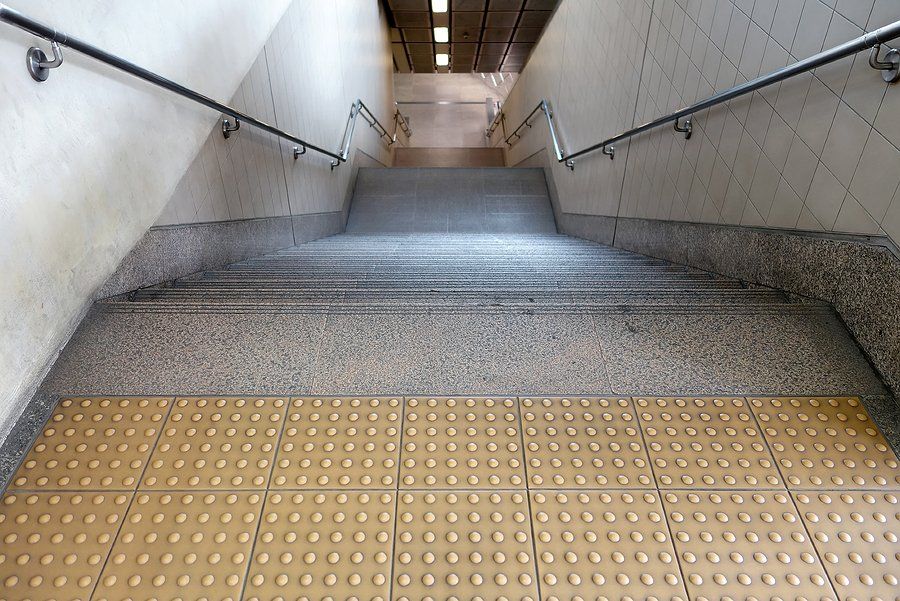Tactiles and Stair Nosing
Stainless steel can be used for many things, such as handrails, balustrades, or even intricate designs to improve the aesthetic appeal of your property. Stainless steel can also be used for practical and important purposes, besides the aforementioned. Tactile and stair nosing is an important feature especially, for the blind or visually impaired. Besides the aesthetic appeal, it assists with hazard warnings, directional purposes, and to assist with reducing slips and trips on a staircase.
Why are tactile and stair nosing important?
Stair nosing provides an extra lip on each stair that is sometimes needed. It is important in stopping any potential slips or falls, as it helps easily define the steps and where it ends. Besides this obvious benefit, it can increase the resale value of your home or property. Stainless steel tactiles are one of the most commonly used methods for assisting the visually impaired against hazards. Some of the common areas a stainless steel tactile will be installed is ramps, the end of platforms, and staircases. It is important to consider installing tactiles not only for the visually impaired but also for assisting in ensuring that your flooring is slip-resistant.
Warning and directional tactile indicators
Warning tactile indicators are installed onto a surface, with raised studs or dots distributed in a grid pattern. This is most commonly used to warn the blind and visually impaired of a hazard ahead. They function much like a stop sign for the blind, indicating to stop or slow down from a hazard or obstruction that may be nearby. Warning tactiles do not indicate what the hazard is, this needs to be clarified before walking on. Directional tactile indicators include several raised bars on the walking area. These are installed to direct and lead through an intended pathway that is safe for use. Directional tactiles are often used where the curb or walkway is not visible and other forms of directional guidance are of importance.
Types of stair nosing
There are several options available when you are looking at having stair nosing installed. The pencil round is one option that got that name from its look that resembles a pencil that is laid across the tread of the step. This is the most popular option for homeowners today. A square is an option that is fast growing in popularity. No overhang is an option for people who are concerned about an overhang posing as a tripping hazard. The no overhang best suits a staircase with a seamless look. Other than stair nosing being an important part of a steps composition there are a variety of options that will serve your aesthetic look as well as take care of the practical use.
Benefits of stair nosing
Stair nosing may have options to best fit the aesthetic look of your home, but some important benefits come with having them installed. It helps to improve the safety of your staircase, as they leave you with little room for trips or falls. A carefully chosen stair nosing can also help to protect your staircase from treads and general wear. The edges of your staircase are particularly vulnerable to damage as this is where the most pressure is placed. A stair nosing can assist with the protection from this. Research has shown that many people get severely injured from misjudging a step. A nosing can improve the visibility of the edge of the step, assisting with limiting slips and falls from happening.

